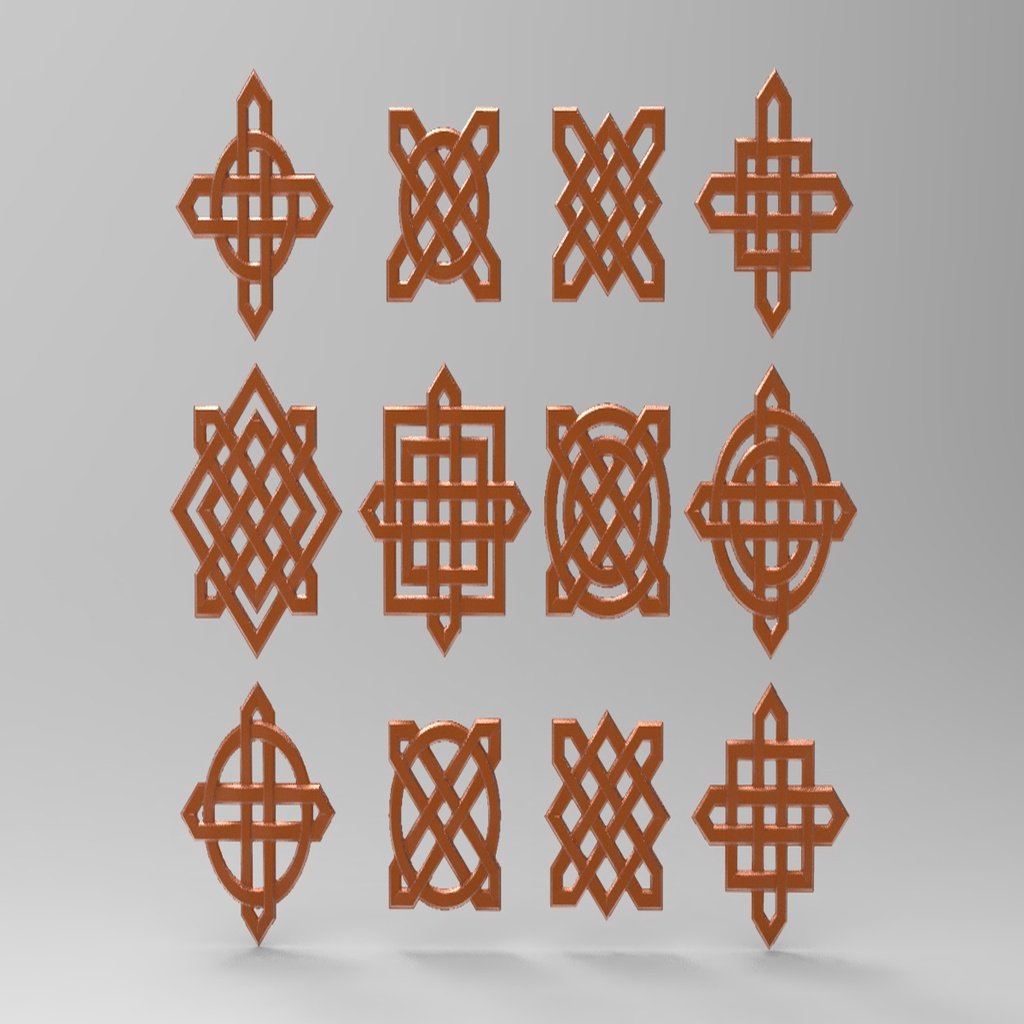
Celtic art for CNC and remixes
thingiverse
The Celtic art style, which originated in the British Isles and continental Europe, has undergone various revivals throughout history. The first revival occurred during the Arts and Crafts movement of the late 19th and early 20th centuries, but it began to decline by the 1920s. However, a new Celtic Revival, also known as the Celtic Renaissance, emerged in the 1980s and continues to this day. The Celtic style is characterized by intricate patterns and designs, often featuring interlacing lines, knotwork, and other motifs. These designs are inspired by pre-Christian Celtic art and have been used in various forms of decorative arts, including jewelry, metalwork, textiles, and illuminated manuscripts. Some notable examples of Celtic art include: 1. Hanging bowls: These are copper alloy vessels with decorated plaques along their rims. They were popular during the Anglo-Saxon conquests of England. 2. Carpet pages: These are illuminated manuscript pages decorated entirely in ornamentation. They were a standard feature of Gospel books and often featured geometric or interlace patterns framing a central cross. 3. High crosses: These are tall stone standing crosses that often feature abstract decoration, figures in carved relief, and complex multi-scene schemes. They are common in Ireland, Great Britain, and near continental mission centers. 4. Pictish stones: These are cross-slabs with a cross carved in relief on the slab face, along with other pictures and shapes. They are organized into three Classes based on their period of origin. 5. Insular art or Hiberno-Saxon style: This style is characterized by the fusion of pre-Christian Celtic and Anglo-Saxon metalworking styles applied to illuminated manuscripts, sculpture, and secular and church metalwork. The Celtic calendar, which dates back to the 1st century BC or AD, is another notable example of Celtic art. It features intricate designs and patterns that reflect the cultural and spiritual practices of the ancient Celts. Today, the Celtic style continues to inspire artists, designers, and craftsmen around the world. The International Day of Celtic Art, celebrated on June 9, is a testament to the enduring popularity of this iconic style.
With this file you will be able to print Celtic art for CNC and remixes with your 3D printer. Click on the button and save the file on your computer to work, edit or customize your design. You can also find more 3D designs for printers on Celtic art for CNC and remixes.
